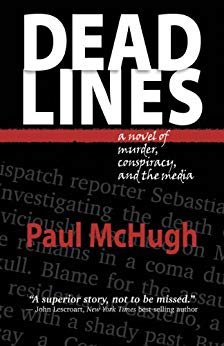Follows the Course of Maritime History
September 16, 2012
By Paul McHugh
Conquistador and explorer Juan Cabrillo sailed right by the narrow entry to San Francisco Bay without noticing it in 1542. For two additional centuries, other adventurous sea captains like Sir Francis Drake and Sebastian Vizcaino kept on missing the Golden Gate. Only after the entrance was discovered and ships began to seek passage into the bay in 1775 did they discover the strait’s dangers as well.
Trying to thread the rock-rimmed eye of this navigational needle – worried by potent currents, blasted by wind and obscured by fog – was not for the faint of heart. It presented a test that many skippers failed. A classic book, “Shipwrecks at the Golden Gate,” details the sinking of nearly a hundred ships here, as well as twice that many vessels stranded, rammed or capsized in the same area.
Some remedy finally arrived. “Let there be lights,” said Congress in 1852, and it proceeded to establish the United States Light House Service. After the Point Bonita lighthouse was erected on a promontory of the Marin County headlands in 1855, the shining beam of its whale-oil lamp, focused on a horizontal plane by prisms of an imported Fresnel lens, began to guide mariners into safe harbor.
Today, the Point Bonita light and others on the California shore are beacons for people who look for a great excuse to make an approach from the inland side. They can visit lighthouses to enjoy cool ocean vistas, to target recreational opportunities in the coastal region, to spot migratory whales in fall or spring, and to inhale a whiff of history.
A rebuilt footbridge re-opened public access all the way out to the Point Bonita light in April, and visitors can now undertake the half-mile walk to the historic site between 12:30 and 3:30 p.m. Saturdays, Sundays and Mondays for free. Such visitation is enabled and guided by citizen- volunteers of the 75,000-acre Golden Gate National Recreation Area, which surrounds the overlook.
On a recent Monday, several dozen visitors of many ages and nationalities lined up for Point Bonita. A volunteer unlocked a steel door set in a lichen-splashed cliff of coastal rock, then led the way through a hand-hewn, 118-foot-long tunnel carved by Chinese laborers in 1877. That was when the light, originally placed much higher on the hillside, was moved to its current elevation so it could shine its beams below the high fogs.
Next, a visitor reaches several photographic vantage points for the light, and finally, a 132-foot pedestrian bridge that stretches to the lighthouse proper.
In the early days, a perilous footpath led the way out to the light for the keeper and his “wickies” (assistants), but that crumbled away, requiring an access bridge to be built in 1954. It too succumbed to the onslaught of ocean weather and was demolished in 2010.
The new suspension bridge uses abutments from the old one, and bears more than a passing resemblance to its humongous orange sister to the east – the Golden Gate Bridge – although this smaller conveyance is white, and needless to say, closed to vehicular traffic. Walking on it, you will notice a bit of sway, a small amount of bounce, enough to add a dose of excitement as you stroll a hundred feet above the base of wave-lashed cliffs.
Once across, you’ll see the iron lighthouse structure close-up, as well as the stout foghorn building and a small set of historic displays, and meet the informative volunteers who seem eager to share the lore of this site.
“I’ve hiked all over the GGNRA with my husband, and I felt like I wanted to contribute something back,” said an ebullient Elizabeth Hoffman. “People really enjoy coming out here.
“The only thing that can detract from a visit is if they forget to bring a windbreaker. Or try to hike down the trail in flip-flops or high heels.”
At the Point Bonita lighthouse, history lessons arrive in different forms. The progress of the illumination source itself comprises a mini-course in tech development: whale oil lamp (1855-70); kerosene wick lamp (1870-1913); incandescent vapor lamp (1913-27); electric bulb (1927-present) – the latter now a 1,000-watt item replaced every six months by the Coast Guard.
And the foghorn out here rode a similar technical trajectory, from cannon fire every half-hour back in 1856 to an electric horn that now gets triggered automatically when a laser detects enough moisture in the atmosphere.
When you drive across the Golden Gate Bridge at 45 mph, keeping your eye on the traffic that hurtles ahead and behind, it’s quite hard to take in the majesty of the strait below you and seaward with anything more than a swift glance. However, once you walk out to the Point Bonita light, you’ll find abundant space and time to appreciate the vastness of the sea and the stately in-and-out passage of deep-water vessels.
You may even indulge in casting your thoughts back to the wiry old salts with “h-o-l-d f-a-s-t” tattooed on their knuckles, clinging to the lofty spars of tall ships as they rode the prevailing westerlies in through a perilous passage, seeking respite and refuge in one of the most lovely harbors sailors ever found.








